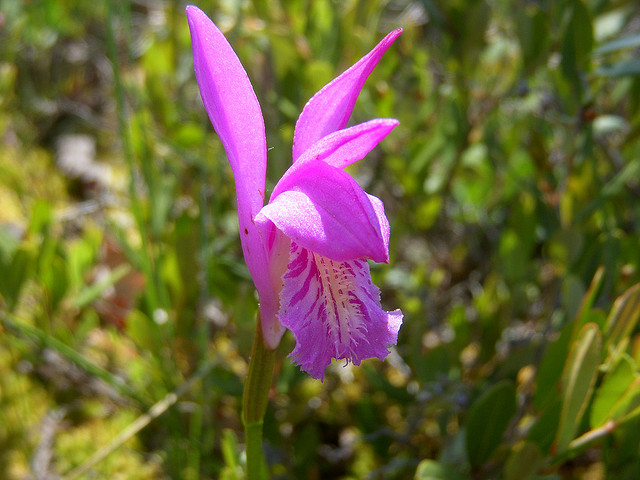Map Snapshot


5 Records
Status
Last seen in 1918 at Suitland Bog and known from the “magnolia bogs” as early as 1809 (McAtee, 1922). The Queen Anne’s County station reported by Reveal & Broome (1981) citing Shreve (1910) is an error; Shreve (1910) reported Calopogon tuberosus (as Limodorum) and not Arethusa. The species was collected in Maryland in the period from 1696-1700 by Krieg and Vernon, or Hugh Jones (British Museum of Natural History, London) (Reveal & Broome, 1981). The historical record for Cecil County (J. Ford Sempers b.1866-d.1951, collected on May 19, 1901) is difficult to ascertain the actual locality, as the specimen is stamped with the collector’s name, town, and county, along with few details other than distance from a train station. For example, Arethusa was collected "2 miles SE of station". Among Mr. Semper's collections were Helonias bullata, Calopogon tuberosus and Platanthera ciliaris, all of which occur or occurred, unfortunately, in the extensive Fall Line seeps of Cecil County, generally forming the path of current Interstate 95. (C. Frye, 2024)
Seasonality Snapshot
Source: Wikipedia
| Dragon's mouth orchid | |
|---|---|

| |
| Taken Pancake Bay, Ontario | |
| Scientific classification | |
| Kingdom: | Plantae |
| Clade: | Tracheophytes |
| Clade: | Angiosperms |
| Clade: | Monocots |
| Order: | Asparagales |
| Family: | Orchidaceae |
| Subfamily: | Epidendroideae |
| Tribe: | Arethuseae |
| Subtribe: | Arethusinae |
| Genus: | Arethusa L. |
| Species: | A. bulbosa
|
| Binomial name | |
| Arethusa bulbosa | |
| Synonyms[3] | |
| |
Arethusa bulbosa, commonly called dragon's mouth orchid,[4] is the only species in the orchid genus Arethusa.[3] The genus is named after a naiad of Greek mythology.[5] This monotypic genus is abbreviated Aret in trade journals.
This terrestrial and rare orchid occurs in Eastern North America from Manitoba east to Newfoundland and St. Pierre & Miquelon south to Virginia, with isolated populations in northern Saskatchewan and in the Carolinas.[3][6][7] It occurs in bogs, swamps and other wet lowlands. It grows to a height of 15 cm. It forms a large, single, pink terminal flower, with a showy lip and white and yellow fringed crests.[2]
Gallery
[edit]-
Western Brook Pond Trail, Gros Morne National Park, Newfoundland and Labrador
-
Drawing from Britton, N.L., and A. Brown. (1913). Illustrated flora of the northern states and Canada.
References
[edit]- ^ Maiz-Tome, L. (2017). "Arethusa bulbosa". The IUCN Red List of Threatened Species. 208. IUCN. e.T64264102A67728533. doi:10.2305/IUCN.UK.2017-2.RLTS.T64264102A67728533.en.
- ^ a b Justice, William S.; Bell, C. Ritchie; Lindsey, Anne H. (2005). Wild Flowers of North Carolina (2. printing. ed.). Chapel Hill, NC: Univ. of North Carolina Press. p. 52. ISBN 0807855979.
- ^ a b c Kew World Checklist of Selected Plant Families, Arethusa bulbosa
- ^ Voitk, A & M. (2006). Orchids on the Rock: The Orchids of Newfoundland. Rocky Harbour, NL: Gros Morne Co-operating Association.
- ^ University of Wisconsin, Orchids of Wisconsin, Arethusa bulbosa
- ^ Flora of North America v 26 p 597, Arethusa bulbosa
- ^ "Arethusa bulbosa". County-level distribution map from the North American Plant Atlas (NAPA). Biota of North America Program (BONAP). 2014.








